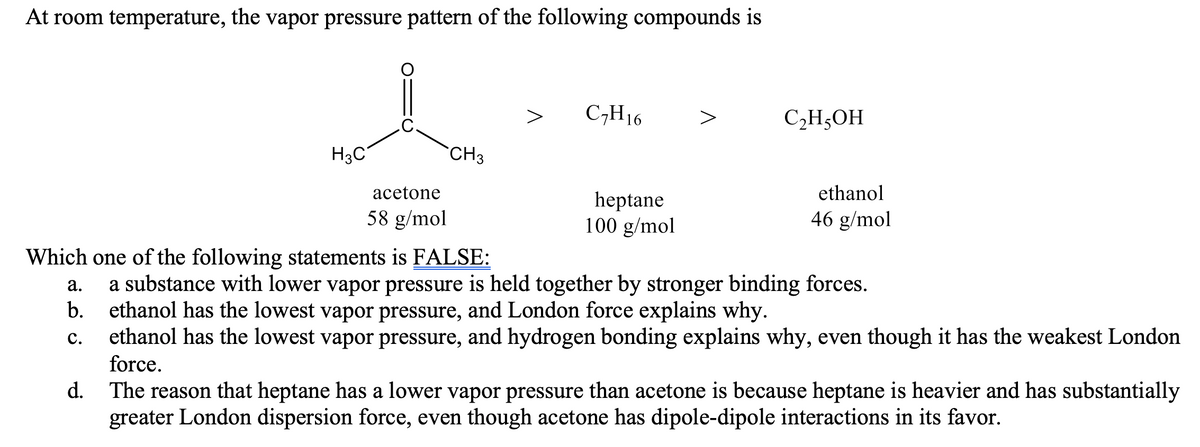At room temperature, the vapor pressure pattern of the following compounds is > C,H16 > C,H;OH H3C° `CH3 acetone ethanol heptane 100 g/mol 58 g/mol 46 g/mol Which one of the following statements is FALSE: a substance with lower vapor pressure is held together by stronger binding forces. b. ethanol has the lowest vapor pressure, and London force explains why. ethanol has the lowest vapor pressure, and hydrogen bonding explains why, even though it has the weakest London force. а. с. d. The reason that heptane has a lower vapor pressure than acetone is because heptane is heavier and has substantially greater London dispersion force, even though acetone has dipole-dipole interactions in its favor.
States of Matter
The substance that constitutes everything in the universe is known as matter. Matter comprises atoms which in turn are composed of electrons, protons, and neutrons. Different atoms combine together to give rise to molecules that act as a foundation for all kinds of substances. There are five states of matter based on their energies of attraction, namely solid, liquid, gases, plasma, and BEC (Bose-Einstein condensates).
Chemical Reactions and Equations
When a chemical species is transformed into another chemical species it is said to have undergone a chemical reaction. It consists of breaking existing bonds and forming new bonds by changing the position of electrons. These reactions are best explained using a chemical equation.

Trending now
This is a popular solution!
Step by step
Solved in 2 steps









